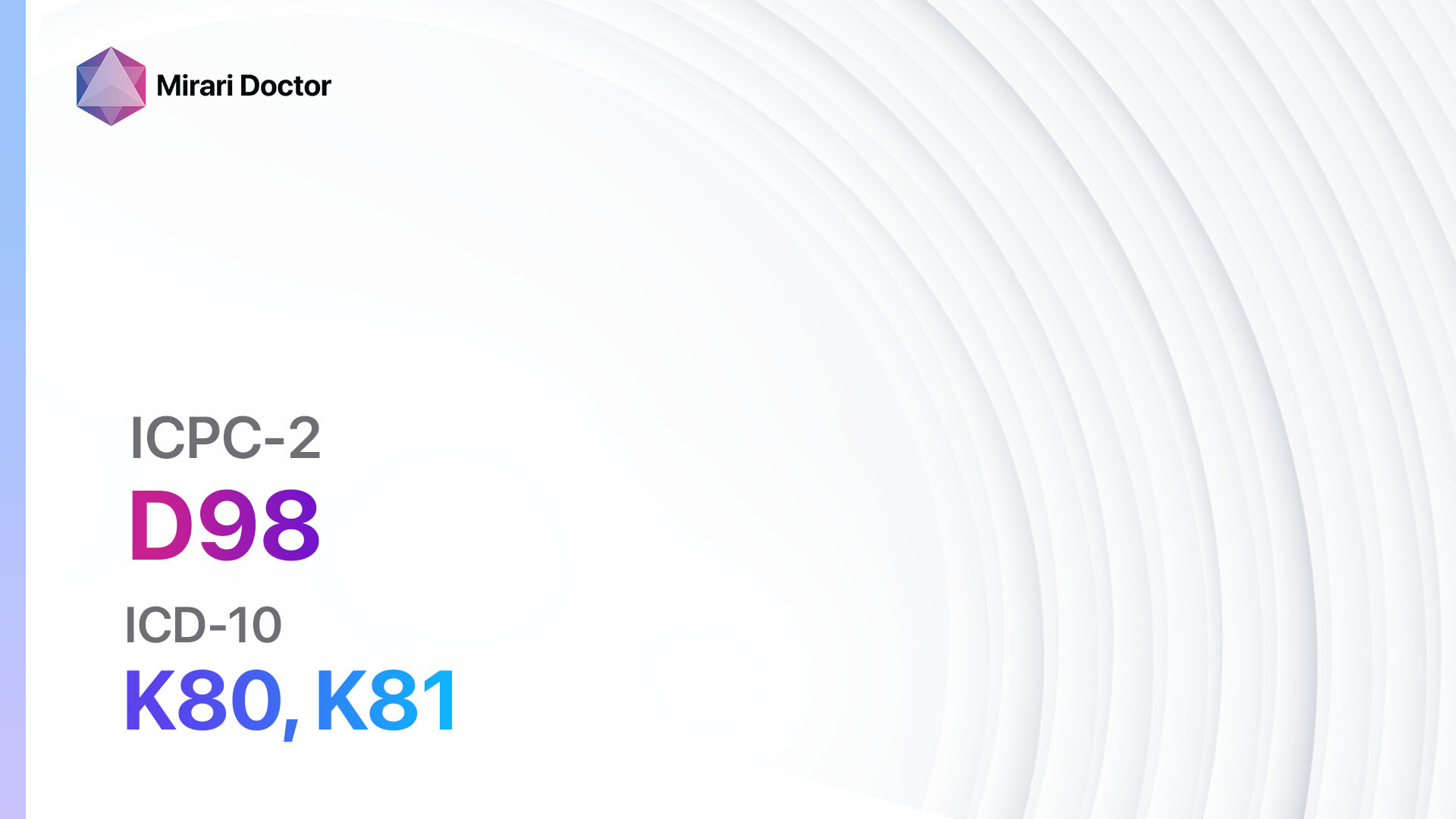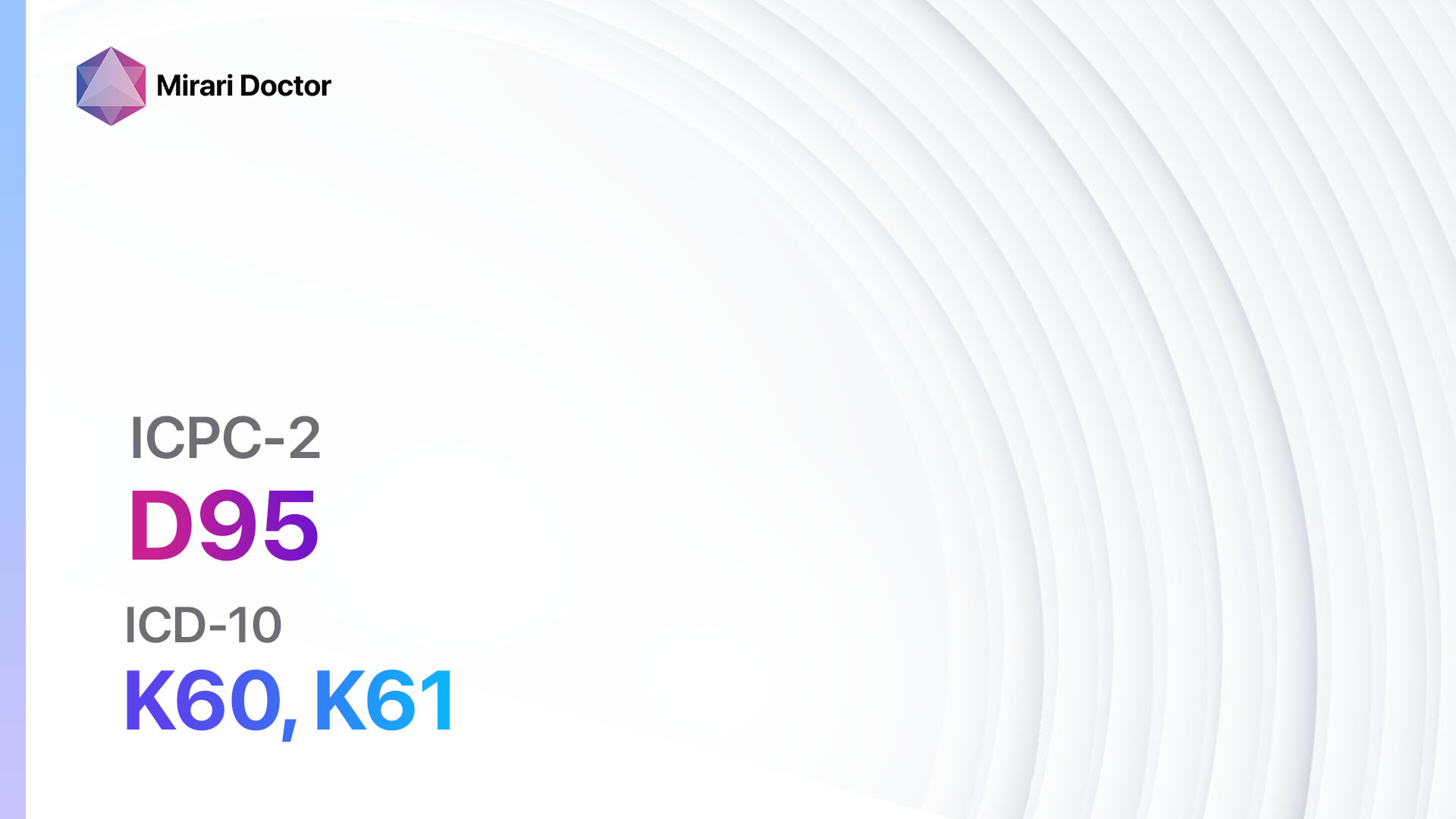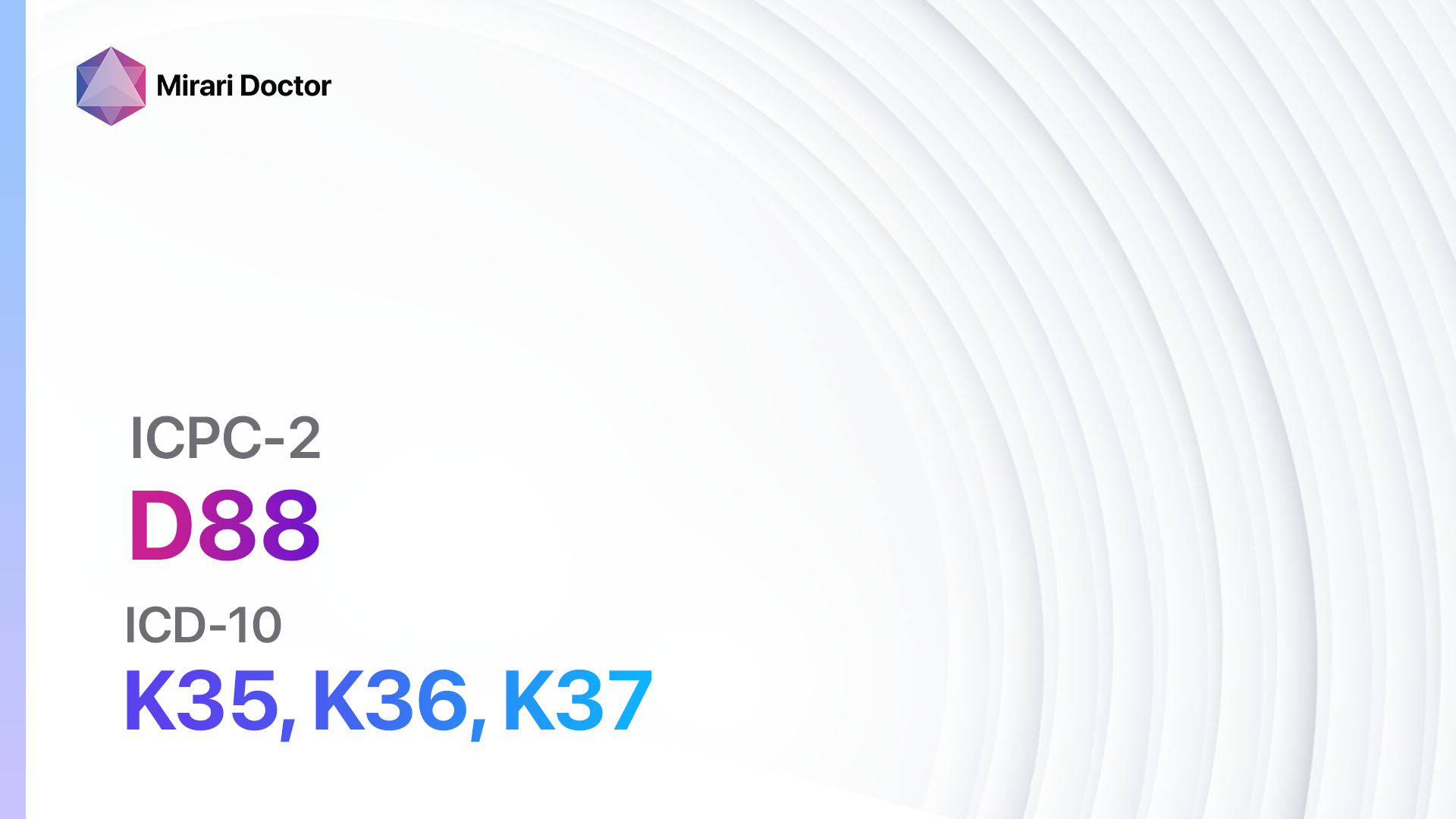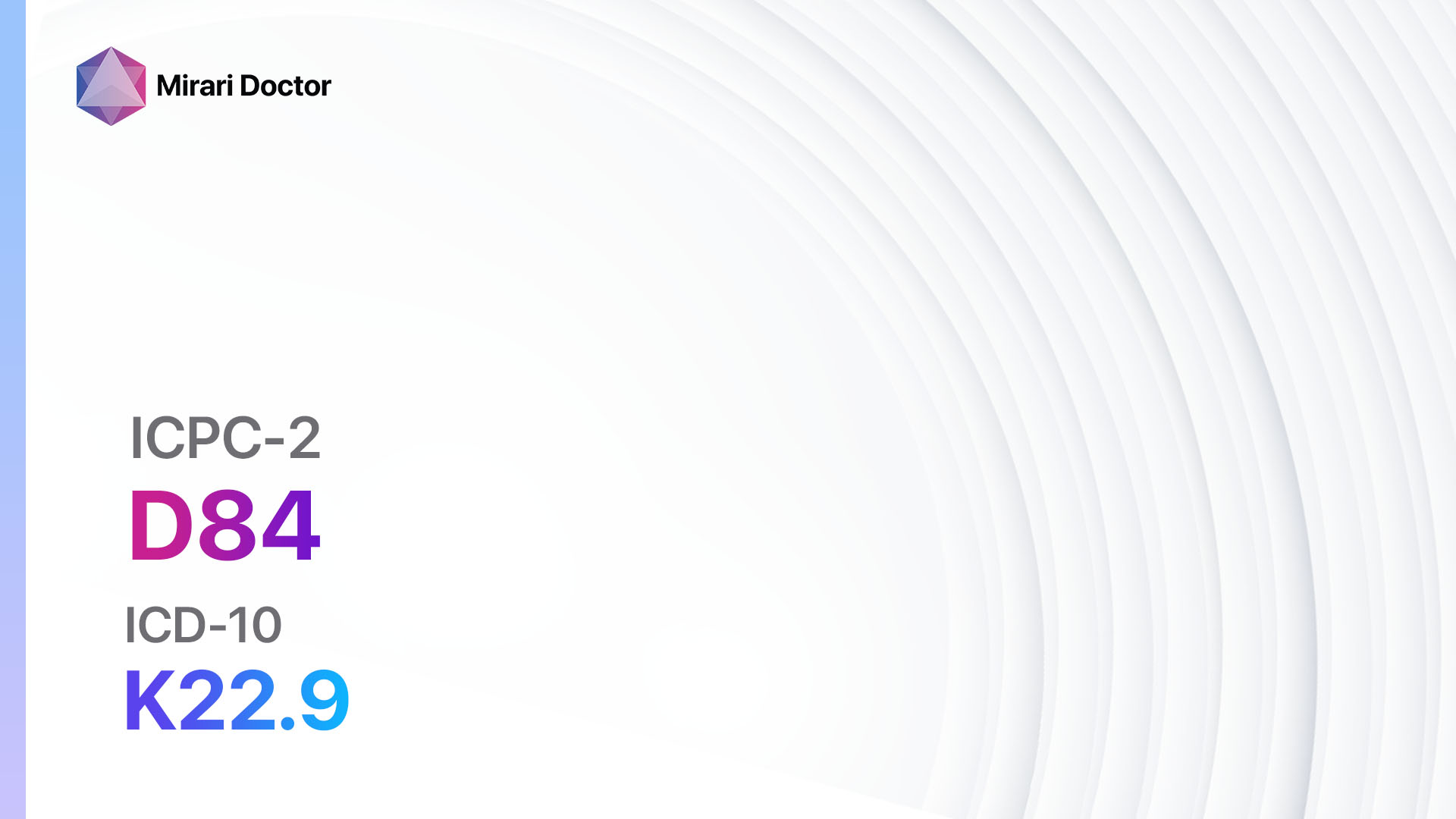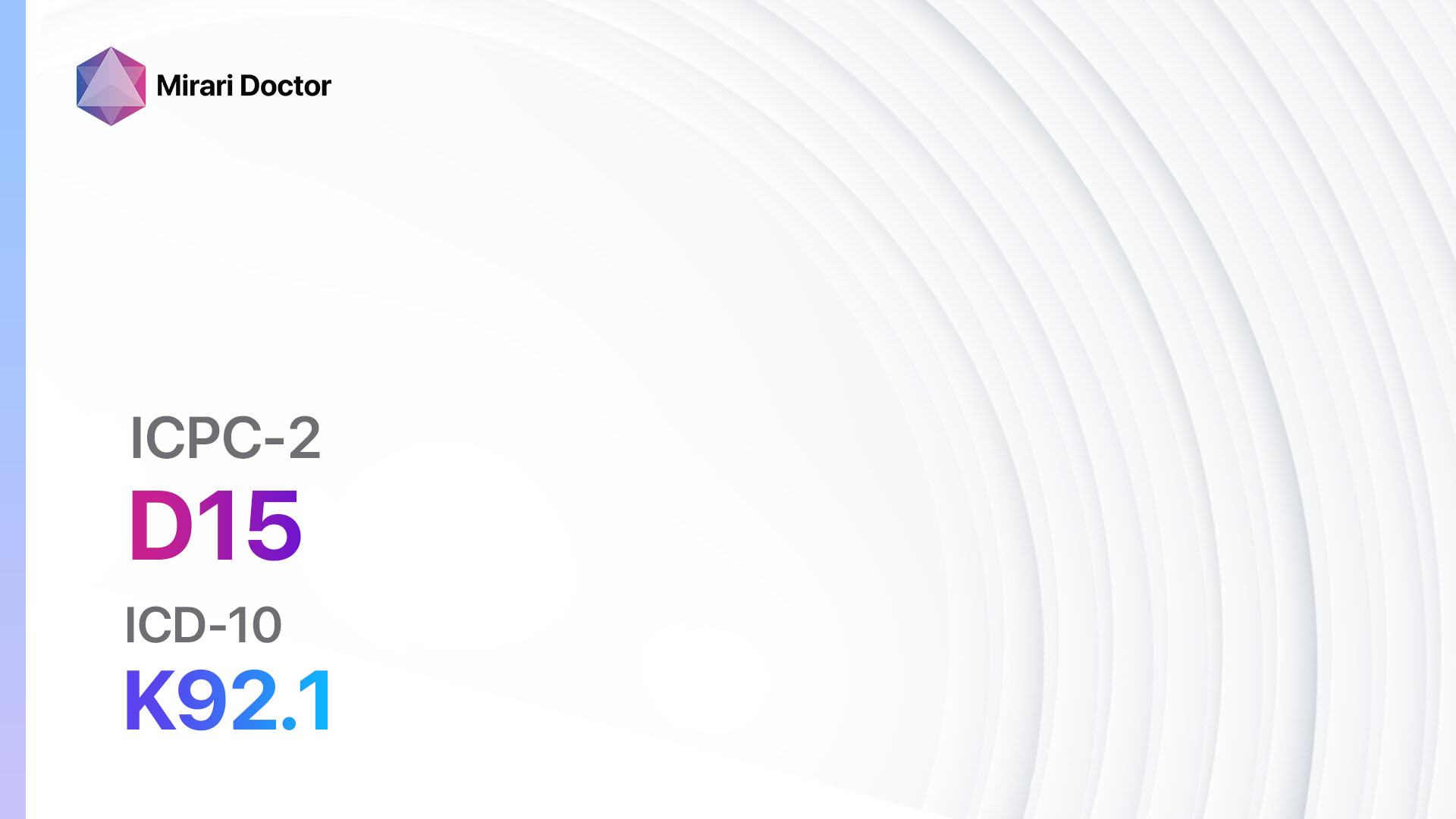
Introduction
Melaena, also known as melena, is a medical term used to describe the passage of black, tarry stools due to the presence of digested blood[1]. It is a symptom that can indicate bleeding in the upper gastrointestinal tract[2]. The aim of this guide is to provide a comprehensive overview of melaena, including its symptoms, causes, diagnostic steps, possible interventions, and patient education.
Codes
Symptoms
- Black, tarry stools[5]
- Foul-smelling stools[6]
- Blood in vomit (hematemesis)[7]
- Fatigue or weakness[8]
- Abdominal pain or discomfort[9]
Causes
- Peptic ulcers[10]
- Gastritis[10]
- Esophageal varices
- Mallory-Weiss tear
- Gastrointestinal bleeding due to tumors or polyps
Diagnostic Steps
Medical History
- Gather information about the patient’s symptoms, including the frequency and duration of melaena.
- Ask about any previous episodes of gastrointestinal bleeding.
- Inquire about any known medical conditions, such as peptic ulcers or liver disease.
- Assess the patient’s risk factors for gastrointestinal bleeding, such as alcohol consumption or use of nonsteroidal anti-inflammatory drugs (NSAIDs).
Physical Examination
- Perform a thorough abdominal examination to assess for tenderness or masses.
- Check the patient’s vital signs, including blood pressure and heart rate.
- Look for signs of anemia, such as pale skin or nail beds.
Laboratory Tests
- Complete blood count (CBC) to assess for anemia and blood loss.
- Coagulation profile to evaluate the patient’s clotting ability.
- Liver function tests to assess liver health and function.
- Stool tests to check for the presence of blood.
Diagnostic Imaging
- Upper gastrointestinal endoscopy to visualize the upper digestive tract and identify the source of bleeding.
- Abdominal ultrasound to assess the liver and other abdominal organs.
- CT scan or MRI may be ordered if other imaging modalities are inconclusive.
Other Tests
- Capsule endoscopy may be used to visualize the small intestine if the source of bleeding is not identified with other tests.
- Angiography may be performed to identify and potentially treat the source of bleeding.
Follow-up and Patient Education
- Schedule a follow-up appointment to discuss the results of diagnostic tests and determine the appropriate treatment plan.
- Educate the patient about the importance of adhering to any prescribed medications or lifestyle modifications.
- Provide information on signs and symptoms that should prompt immediate medical attention.
Possible Interventions
Traditional Interventions
Medications:
Top 5 drugs for Melaena:
- Proton pump inhibitors (e.g., Omeprazole, Pantoprazole):
- Cost: Generic versions can be $10-$50/month.
- Contraindications: Hypersensitivity to proton pump inhibitors.
- Side effects: Headache, diarrhea, abdominal pain.
- Severe side effects: Clostridium difficile infection, osteoporosis-related fractures.
- Drug interactions: Clopidogrel, warfarin.
- Warning: Long-term use may increase the risk of certain infections and fractures.
- H2 receptor blockers (e.g., Ranitidine, Famotidine):
- Cost: Generic versions can be $10-$30/month.
- Contraindications: Hypersensitivity to H2 receptor blockers.
- Side effects: Headache, dizziness, constipation.
- Severe side effects: Rare but serious adverse effects include blood disorders and liver problems.
- Drug interactions: Antacids, ketoconazole.
- Warning: May mask symptoms of gastric cancer.
- Antacids (e.g., Aluminum hydroxide, Magnesium hydroxide):
- Cost: Over-the-counter options are available for <$10/month.
- Contraindications: Hypersensitivity to antacids.
- Side effects: Constipation or diarrhea, stomach cramps.
- Severe side effects: Rare but serious adverse effects include kidney problems and electrolyte imbalances.
- Drug interactions: Tetracycline antibiotics, iron supplements.
- Warning: Long-term use may lead to metabolic alkalosis.
- Vitamin K:
- Cost: Varies depending on the formulation.
- Contraindications: Hypersensitivity to vitamin K.
- Side effects: Rare but possible adverse effects include allergic reactions.
- Severe side effects: None reported.
- Drug interactions: Anticoagulant medications.
- Warning: Use with caution in patients with liver disease.
- Blood transfusion:
- Cost: Varies depending on the blood products used.
- Contraindications: None, but risks and benefits should be carefully considered.
- Side effects: Rare but possible adverse effects include transfusion reactions.
- Severe side effects: Transfusion-related acute lung injury (TRALI), transfusion-associated circulatory overload (TACO).
- Drug interactions: None.
- Warning: Blood transfusions should be administered judiciously and only when necessary.
Alternative Drugs:
- Tranexamic acid: An antifibrinolytic agent that helps prevent or reduce bleeding.
- Octreotide: A medication that can reduce bleeding by constricting blood vessels in the gastrointestinal tract.
- Esomeprazole: A proton pump inhibitor that may be used as an alternative to omeprazole.
- Misoprostol: A medication that can help protect the stomach lining and reduce the risk of ulcers.
- Erythropoietin: A hormone that stimulates the production of red blood cells and may be used in cases of severe anemia.
Surgical Procedures:
- Endoscopic therapy: Involves using an endoscope to treat the source of bleeding, such as through injection therapy, thermal therapy, or mechanical therapy.
- Surgical intervention: In some cases, surgery may be necessary to stop the bleeding or remove the source of bleeding.
Alternative Interventions
- Acupuncture: May help improve blood flow and reduce pain. Cost: $60-$120 per session.
- Chelation therapy: Controversial treatment involving the administration of chelating agents to remove heavy metals from the body. Cost: $75-$150 per session.
- Hyperbaric oxygen therapy: Involves breathing pure oxygen in a pressurized chamber to increase oxygen delivery to tissues. Cost: $200-$300 per session.
- Herbal supplements: Some herbs, such as ginger or licorice root, may have potential benefits for reducing gastrointestinal bleeding. Cost: Varies depending on the specific supplement.
- Dietary modifications: A diet rich in fruits, vegetables, and whole grains may help promote healthy digestion and reduce the risk of gastrointestinal bleeding. Cost: Varies depending on individual food choices.
Lifestyle Interventions
- Avoiding alcohol: Alcohol can irritate the stomach lining and increase the risk of gastrointestinal bleeding. Cost: Varies depending on individual alcohol consumption habits.
- Quitting smoking: Smoking can contribute to the development of peptic ulcers and increase the risk of gastrointestinal bleeding. Cost: Varies depending on individual smoking cessation methods.
- Managing stress: Chronic stress can contribute to the development of gastrointestinal conditions that may lead to bleeding. Cost: Varies depending on individual stress management techniques.
- Regular exercise: Engaging in regular physical activity can help promote healthy digestion and reduce the risk of gastrointestinal bleeding. Cost: Varies depending on individual exercise preferences.
- Maintaining a healthy weight: Obesity can increase the risk of gastrointestinal conditions that may lead to bleeding. Cost: Varies depending on individual weight management strategies.
It is important to note that the cost ranges provided are approximate and may vary depending on the location and availability of the interventions. It is recommended to consult with a healthcare professional for personalized treatment recommendations and cost estimates.
Mirari Cold Plasma Alternative Intervention
Understanding Mirari Cold Plasma
- Safe and Non-Invasive Treatment: Mirari Cold Plasma is a safe and non-invasive treatment option for various skin conditions. It does not require incisions, minimizing the risk of scarring, bleeding, or tissue damage.
- Efficient Extraction of Foreign Bodies: Mirari Cold Plasma facilitates the removal of foreign bodies from the skin by degrading and dissociating organic matter, allowing easier access and extraction.
- Pain Reduction and Comfort: Mirari Cold Plasma has a local analgesic effect, providing pain relief during the treatment, making it more comfortable for the patient.
- Reduced Risk of Infection: Mirari Cold Plasma has antimicrobial properties, effectively killing bacteria and reducing the risk of infection.
- Accelerated Healing and Minimal Scarring: Mirari Cold Plasma stimulates wound healing and tissue regeneration, reducing healing time and minimizing the formation of scars.
Mirari Cold Plasma Prescription
Video instructions for using Mirari Cold Plasma Device – D15 Melaena (ICD-10:K92.1)
| Mild | Moderate | Severe |
| Mode setting: 1 (Infection) Location: 3 (Kidney, Liver & Spleen) Morning: 15 minutes, Evening: 15 minutes | Mode setting: 1 (Infection) Location: 3 (Kidney, Liver & Spleen) Morning: 30 minutes, Lunch: 30 minutes, Evening: 30 minutes | Mode setting: 1 (Infection) Location: 3 (Kidney, Liver & Spleen) Morning: 30 minutes, Lunch: 30 minutes, Evening: 30 minutes |
| Mode setting: 2 (Wound Healing) Location: 3 (Kidney, Liver & Spleen) Morning: 15 minutes, Evening: 15 minutes | Mode setting: 2 (Wound Healing) Location: 3 (Kidney, Liver & Spleen) Morning: 30 minutes, Lunch: 30 minutes, Evening: 30 minutes | Mode setting: 2 (Wound Healing) Location: 3 (Kidney, Liver & Spleen) Morning: 30 minutes, Lunch: 30 minutes, Evening: 30 minutes |
| Mode setting: 3 (Antiviral Therapy) Location: 4 (Heart, Bile & Pancreas) Morning: 15 minutes, Evening: 15 minutes | Mode setting: 3 (Antiviral Therapy) Location: 4 (Heart, Bile & Pancreas) Morning: 30 minutes, Lunch: 30 minutes, Evening: 30 minutes | Mode setting: 3 (Antiviral Therapy) Location: 4 (Heart, Bile & Pancreas) Morning: 30 minutes, Lunch: 30 minutes, Evening: 30 minutes |
| Total Morning: 45 minutes approx. $7.50 USD, Evening: 45 minutes approx. $7.50 USD | Total Morning: 90 minutes approx. $15 USD, Lunch: 90 minutes approx. $15 USD, Evening: 90 minutes approx. $15 USD, | Total Morning: 90 minutes approx. $15 USD, Lunch: 90 minutes approx. $15 USD, Evening: 90 minutes approx. $15 USD, |
| Usual treatment for 7-60 days approx. $105 USD – $900 USD | Usual treatment for 6-8 weeks approx. $1,890USD – $2,520 USD | Usual treatment for 3-6 months approx. $4,050 USD – $8,100 USD |
 |
|
Use the Mirari Cold Plasma device to treat Melaena effectively.
WARNING: MIRARI COLD PLASMA IS DESIGNED FOR THE HUMAN BODY WITHOUT ANY ARTIFICIAL OR THIRD PARTY PRODUCTS. USE OF OTHER PRODUCTS IN COMBINATION WITH MIRARI COLD PLASMA MAY CAUSE UNPREDICTABLE EFFECTS, HARM OR INJURY. PLEASE CONSULT A MEDICAL PROFESSIONAL BEFORE COMBINING ANY OTHER PRODUCTS WITH USE OF MIRARI.
Step 1: Cleanse the Skin
- Start by cleaning the affected area of the skin with a gentle cleanser or mild soap and water. Gently pat the area dry with a clean towel.
Step 2: Prepare the Mirari Cold Plasma device
- Ensure that the Mirari Cold Plasma device is fully charged or has fresh batteries as per the manufacturer’s instructions. Make sure the device is clean and in good working condition.
- Switch on the Mirari device using the power button or by following the specific instructions provided with the device.
- Some Mirari devices may have adjustable settings for intensity or treatment duration. Follow the manufacturer’s instructions to select the appropriate settings based on your needs and the recommended guidelines.
Step 3: Apply the Device
- Place the Mirari device in direct contact with the affected area of the skin. Gently glide or hold the device over the skin surface, ensuring even coverage of the area experiencing.
- Slowly move the Mirari device in a circular motion or follow a specific pattern as indicated in the user manual. This helps ensure thorough treatment coverage.
Step 4: Monitor and Assess:
- Keep track of your progress and evaluate the effectiveness of the Mirari device in managing your Melaena. If you have any concerns or notice any adverse reactions, consult with your health care professional.
Note
This guide is for informational purposes only and should not replace the advice of a medical professional. Always consult with your healthcare provider or a qualified medical professional for personal advice, diagnosis, or treatment. Do not solely rely on the information presented here for decisions about your health. Use of this information is at your own risk. The authors of this guide, nor any associated entities or platforms, are not responsible for any potential adverse effects or outcomes based on the content.
Mirari Cold Plasma System Disclaimer
- Purpose: The Mirari Cold Plasma System is a Class 2 medical device designed for use by trained healthcare professionals. It is registered for use in Thailand and Vietnam. It is not intended for use outside of these locations.
- Informational Use: The content and information provided with the device are for educational and informational purposes only. They are not a substitute for professional medical advice or care.
- Variable Outcomes: While the device is approved for specific uses, individual outcomes can differ. We do not assert or guarantee specific medical outcomes.
- Consultation: Prior to utilizing the device or making decisions based on its content, it is essential to consult with a Certified Mirari Tele-Therapist and your medical healthcare provider regarding specific protocols.
- Liability: By using this device, users are acknowledging and accepting all potential risks. Neither the manufacturer nor the distributor will be held accountable for any adverse reactions, injuries, or damages stemming from its use.
- Geographical Availability: This device has received approval for designated purposes by the Thai and Vietnam FDA. As of now, outside of Thailand and Vietnam, the Mirari Cold Plasma System is not available for purchase or use.
References
- Rockey DC. Occult gastrointestinal bleeding. N Engl J Med. 1999;341(1):38-46.
- Cappell MS, Friedel D. Initial management of acute upper gastrointestinal bleeding: from initial evaluation up to gastrointestinal endoscopy. Med Clin North Am. 2008;92(3):491-509.
- WONCA International Classification Committee. ICPC-2: International Classification of Primary Care. 2nd ed. Oxford: Oxford University Press; 1998.
- World Health Organization. International Statistical Classification of Diseases and Related Health Problems 10th Revision. Geneva: World Health Organization; 2016.
- Zuckerman GR, Prakash C, Askin MP, Lewis BS. AGA technical review on the evaluation and management of occult and obscure gastrointestinal bleeding. Gastroenterology. 2000;118(1):201-221.
- Raju GS, Gerson L, Das A, Lewis B. American Gastroenterological Association (AGA) Institute technical review on obscure gastrointestinal bleeding. Gastroenterology. 2007;133(5):1697-1717.
- Laine L, Shah A. Randomized trial of urgent vs. elective colonoscopy in patients hospitalized with lower GI bleeding. Am J Gastroenterol. 2010;105(12):2636-2641.
- Srygley FD, Gerardo CJ, Tran T, Fisher DA. Does this patient have a severe upper gastrointestinal bleed?. JAMA. 2012;307(10):1072-1079.
- Wilcox CM, Alexander LN, Cotsonis G. A prospective characterization of upper gastrointestinal hemorrhage presenting with hematochezia. Am J Gastroenterol. 1997;92(2):231-235.
- Laine L, Peterson WL. Bleeding peptic ulcer. N Engl J Med. 1994;331(11):717-727.
Related articles
Made in USA



